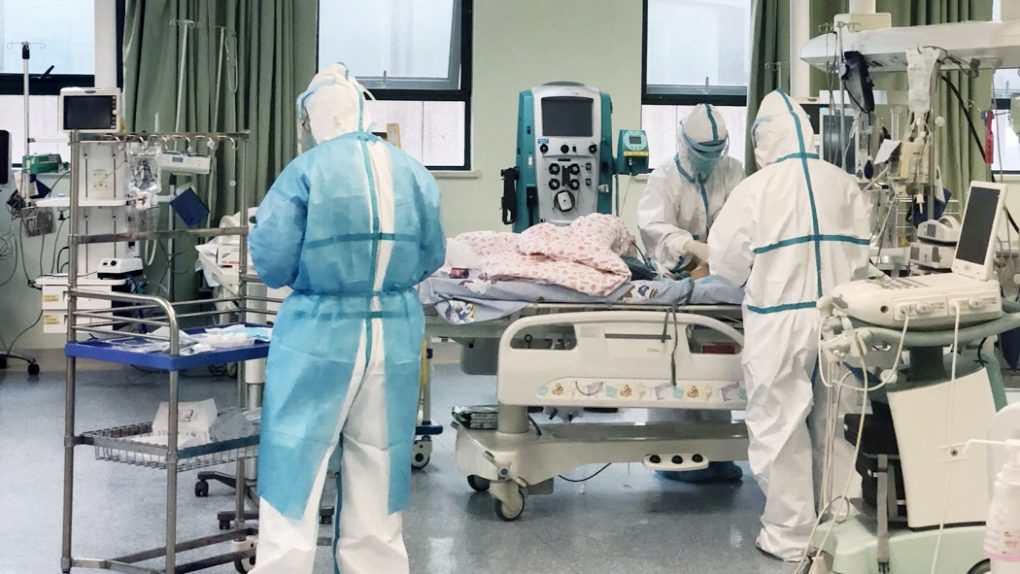- A coronavirus-flu comparison of lung tissue from people who died of both diseases shows that COVID-19 is significantly worse than the flu.
- The novel coronavirus can cause severe damage at the blood vessel level, including to the capillaries in the lungs, which can significantly reduce a lung’s ability to function.
- The new study confirms previous findings that blood clotting might be a significant coronavirus symptom that can go undetected and is unlike what happens during a flu infection.
When news first began coming out about an infectious disease from China, the novel coronavirus was immediately likened to the regular flu. It shared the same common symptoms, which made it impossible to diagnose without a test, including fever, coughing, and shortness of breath. It seemed to be far less deadly than it turned out to be. But it wasn’t long before the world realized that COVID-19 wasn’t anything like the flu. Not only is it highly contagious, but it causes all sorts of symptoms that you wouldn’t see with other respiratory diseases and it has a much higher fatality rate. What’s even worse is that we still don’t have a course of treatment for COVID-19, unlike the flu, which makes it even more dangerous. If all of that wasn’t enough, researchers have produced even more evidence showing why the new illness is so much worse than the flu.
Doctors who have been fighting this disease on the front lines started observing unusual symptoms several weeks ago. These included cardiac issues as well as neurological signs unexpected for a flu-like disease. Some hospitals noticed an uptick in strokes in young patients who wouldn’t normally be at risk of developing such conditions. Soon after that, more and more studies explained that COVID-19 causes unusual blood clotting that can affect blood flow to the heart, brain, and other organs, and could be responsible for COVID-19 complications. Blood thinners should be used in COVID-19 therapies to prevent life-threatening problems, one study said.
Now, a new study published in the New England Journal of Medicine this week, via Washington Post, details the kind of injuries the coronavirus causes in the lungs.
The researchers compared seven lungs from COVID-19 fatalities to lung tissue from seven patients who died of pneumonia caused by the flu and 10 lungs donated for transplant but not used. The larger blood vessels of both types of damaged lungs had similar blood clot levels. But the coronavirus attacked the lining of blood vessels, which is a crucial difference from the lungs of people who died from the flu. The researchers found nine times as many microscopic blood clots inside COVID-19 lungs than in lungs from flu patients. The virus may have damaged the walls of those capillaries and blocked the movement of gases. They also discovered inflamed and damaged cells in the lining of blood vessels.
Also interesting is that the lungs from COVID-19 attempted to fight the attack by growing new blood vessels. “The lungs from patients with COVID-19 had significant new vessel growth,” the researchers said. It’s at that level that the gas change occurs. The blood brings CO2 to the lungs and extracts O2, a continuous process that is obviously crucial. Any issues with the lung vascularization combined with a pathogen that already impairs the lower airways could lead to significant breathing difficulties. Oxygen therapy may be required, including ventilators. And COVID-19 patients who end up on machines often don’t recover.
“What’s different about COVID-19 is the lungs don’t get stiff or injured or destroyed before there’s hypoxia,” Steven J. Mentzer told The Post. “For whatever reason, there is a vascular phase,” in addition to the damage that’s commonly associated with viral diseases like the flu. Mentzer is a professor of surgery at Harvard Medical School and part of the team who autopsied the lungs for this study.
Mentzer also said that the lungs may have attempted to pass more oxygen to the hypoxic tissue by creating more lung vessels. “That may be one of the things that gets people better,” he said. The team doesn’t have all the answers and it hasn’t been able to determine what may cause the vascular component of the disease. “Patients who do fairly well have a purely respiratory disease, and the patients who have trouble have a vascular component as well,” Mentzer noted.
If anything, the study may serve physicians who are treating COVID-19 patients, especially severe cases, as they may adapt therapies to take into account potential damage to blood vessels and prevent the formation of blood clots.








